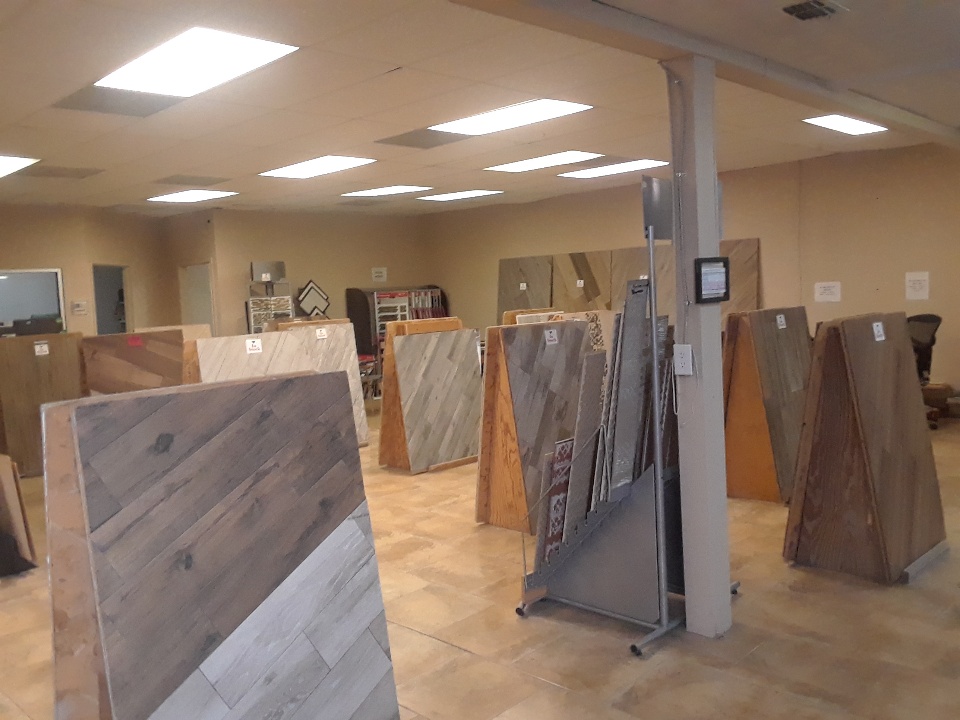If you’re in the middle of remodeling your kitchen, you’re probably overwhelmed by the number of choices you have at your disposal. You have a lot of options when it comes to kitchen tile, especially if you’re planning to use them on the floor. The design and style of your kitchen is important, and most people only have one chance to get it right. That’s why it’s so easy to get lost in what may seem like an endless sea of color and texture choices.

Types of Kitchen Tile Flooring
There are many types of kitchen tiles, but they will be in any of the following categories:
- Ceramic — Regular ceramic tiles are sometimes referred to as “non-porcelain” to separate them from porcelain. They’re softer than porcelain, but they can be glazed to create a surface that’s more resistant to wear. The softer texture also makes them easier to cut and install.
- Porcelain — Porcelain is a type of ceramic where sand is added to the clay mixture. It’s also made with additional heat and pressure to produce a surface that’s harder, denser, and less porous than standard ceramic tile.
- Stone — These types of tile are made out of natural stone (such as slate, granite, limestone, travertine, and marble). Most stone tiles are porous, so they’ll need to be refinished with a good stone sealer every two or three years.
Be sure to speak to a professional for more information.
Tips for Choosing the Right Kitchen Tile
Here are some helpful tips on how to simplify the process of finding the right kitchen tile:
- Choose tile that’s easy to clean — A lot of people go with kitchen tile because it’s easy to clean, which is an important consideration. Because it’s where you prepare, cook, and enjoy your meals, the cleanliness of this space is important. You should choose something that’s more resistant to stains and cracks.
- Choose tile that matches your cabinetry — The cabinets are one of the main features of any kitchen. They will often determine the space’s look and feel, so they can often determine the type of tile you choose for your kitchen floors. Do you want to use the same color throughout the entire space, or do you want each part to be on opposite sides of the color spectrum?
- Think about durability — Because a kitchen renovation is such a big investment, durability is an important consideration when it comes to choosing kitchen tile. It’s the most widely-used space in many homes, so you need to pay close attention to how it’s structured and designed.
Be sure to speak to a professional for more information.
Other Considerations for Choosing Kitchen Tile
Here are some other things you should think about as you’re choosing kitchen tile:
- Water Resistance — Some types of tile will absorb water like a sponge, so they won’t make great choices for kitchen floors. It’s better to stick with unglazed tiles with a maximum absorption rate of 0.5% and glazed tiles with a 3% maximum rate.
- Texture — Textured floors aren’t as slippery and are better at hiding dirt, but they can be harder to clean. If you’re worried about people slipping and falling, think about adding mats in areas that are the most concerning (such as in front of the sink).
- Underlayment — Tile needs to be installed on a smooth subfloor that’s also flat, rigid, and clean. Depending on the existing subfloor, a cement tile backer may need to be installed underneath the tile.
Be sure to speak to a professional for additional advice.
Downsides to Kitchen Tile Flooring
Tile creates a hard surface that’s unforgiving in case you drop a glass or dish. If you spend a lot of hours in the kitchen preparing food, it can cause fatigue. It also reflects sound, so tile floors can make the space noisier. Area rugs and anti-fatigue mats are good solutions to these problems.
While it doesn’t require as much as other types of flooring, tile does have its maintenance requirements. Ceramic tile is durable, but the grout between them can get dingier over time. You should regularly apply grout sealer to keep your tile floors looking like new.
Slipperiness can also be an issue, especially if they get wet. If this is an area of concern, be sure to look for tiles that are certified to be slip-resistant by the American with Disabilities Act (ADA). You should be able to find it on the packing boxes and in the product’s literature.
If you’re looking for one of the best tile stores in Corpus Christi, be sure to get in touch with Tile Source of Texas.


 (361) 853-5600
(361) 853-5600









